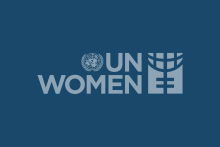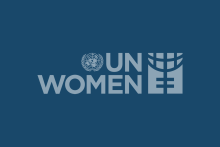This statement* affirms the commitment of the IASC Principals to actively prevent and respond to sexual exploitation and abuse and sexual harassment by humanitarian workers, and the role of Humanitarian Coordinators and Humanitarian Country Teams to implement PSEA commitments in all response operations [1].
We, the IASC Principals, re-affirm our determination to achieve our vision of a humanitarian environment in which people caught up in crises are safe, respected, and can access needed protection and assistance without fear of sexual exploitation or abuse (SEA) by any aid worker and in which aid workers themselves feel supported, respected, and empowered to deliver assistance free from sexual harassment [2].
We recognize that sexual exploitation and abuse and sexual harassment (SEAH) occurs everywhere and is a symptom of power imbalances that are particularly acute in humanitarian contexts and even greater for those who are systematically marginalized. Given the gender dimensions of SEA and sexual harassment, we will therefore strengthen the role of women, girls and people at risk as key partners and accelerate work to increase accountability of the aid community to the affected people. We will protect those reporting SEA and sexual harassment. We will redouble our efforts to ensure that all our staff and affiliated personnel are aware of, and comply with, their rights to, and their responsibilities in maintaining, a workplace free of discrimination, exploitation, harassment or abuse. We will be even more proactive in improving diversity and gender parity in all our organizations, especially at the frontlines of programme delivery and at the most senior levels [3].
We recognize our leadership responsibility to strengthen the humanitarian community’s resolve to protect from SEA and sexual harassment to create a system of collective accountability, and we commit to provide the necessary resources to prevent and address this wrongdoing.
In so doing, we:
Recall the Secretary General’s Bulletin on Special measures for protection from sexual exploitation and sexual abuse [4], including its condemnation of SEA, and the IASC Six Core Principles relating to protection from sexual exploitation and abuse [5];
Recall previous and existing commitments, including the Statement of Commitment on Eliminating Sexual Exploitation and Abuse by UN and Non-UN Personnel [6]; the Minimum Operating Standards (MOS) on Protection from Sexual Exploitation and Abuse (PSEA) by our own Personnel; the UN Protocol on Allegations of SEA involving Implementing Partners [7]; the IASC Vision and Strategy on Protection from Sexual Exploitation and Abuse and Sexual Harassment 2022–2026 [8]; and the IASC Definition and Principles [9] of a Victim/Survivor Centred Approach [10];
Reaffirm that creating and maintaining a workplace culture that prevents sexual exploitation and abuse and sexual harassment is both an individual and organizational responsibility;
Reaffirm zero tolerance for inaction against any form of sexual misconduct [11];
Recognize that inter-agency cooperation is crucial to effectively prevent and respond to sexual exploitation and abuse and sexual harassment;
Recall the importance of due process in referrals and investigations and the respect for the rights of all victims and individuals concerned;
Take note of the best practices and lessons learned from the numerous studies and initiatives carried out by the IASC and other international forums which identify PSEA and sexual harassment issues that need to be addressed at the global level [12];
Find that PSEAH commitments are not universally implemented in practice, and we must prioritize taking further action on these commitments to invoke real change;
Commit to the following Action Points to fulfil our previous and ongoing commitments to protect from SEA and sexual harassment, and to ensure that all responses are developed in a manner that balances respect for due process with a victim and survivor-centred approach:
- Fully implement the Minimum Operating Standards, including by developing operational tools and clear guidance for the field on agency commitments and activities, both at the institutional and collective levels. This requires effective and continuous training to ensure that personnel understand their agencies’ PSEA commitments and Code of Conduct obligations, and prevention actions to address the root causes of sexual misconduct. It also requires that victims and survivors are offered or referred to services, including medical, psychological, socio-economic and legal as appropriate.
- Reinforce the responsibilities of the Humanitarian Coordinator for PSEA, to ensure that PSEA is staffed and resourced within the humanitarian architecture, and IASC system-wide responsibility for ensuring that a collective country PSEA Action Plan is institutionalized [13]. This requires that in-country PSEA networks [14] are led by an inter-agency PSEA Coordinator [15], safe and accessible community feedback mechanisms are available, and inter-agency SEA Referral Procedures are adopted in all humanitarian contexts [16]. Coherent with existing PSEA responsibilities as Resident Coordinator [17] this includes ensuring that victims/survivors have access to appropriate immediate and longer-term assistance, reporting regularly to the Emergency Relief Coordinator on PSEA in relation to humanitarian operations, and actively contributing to PSEA as a standing agenda item at the annual HC meeting.
- Strengthen victim/survivor centred approaches by placing their rights, wishes, needs, safety, dignity, and wellbeing at the centre of all prevention and response measures. This includes ensuring that their safety and security is a primary consideration in all processes, that all actions taken are guided by their informed choices, and that they have access to assistance and support based on their informed consent [18].
- Bolster individual and collective accountability. This includes taking swift and appropriate administrative sanctions, developing and sharing best practices on enforcing the Code of Conduct and referring cases that may rise to criminal conduct to competent authorities with the victim/survivor’s consent where it is safe to do so. This also requires concerted efforts to prevent the re-recruitment of individuals found to have engaged in SEA and sexual harassment, including by using Clear Check and the Misconduct Disclosure Scheme [19] and to enforce PSEA contractual clauses with partners.
Notes
* Versions in Arabic, French, and Spanish will be available soon.
[1] This statement supersedes previous IASC Statements on PSEA and sexual harassment, notably IASC Principals’ Statement on Protection from Sexual Exploitation and Abuse, 2015; IASC Principals’ Statement on Zero Tolerance on Sexual Harassment and Abuse within the Humanitarian Sector, 2017; IASC Statement on Prevention of Sexual Exploitation and Abuse and Sexual Harassment and Abuse, 2018.
[3] IASC Statement on Preventing Sexual Exploitation and Abuse and Sexual Harassment and Abuse, 2018.
[4] SGB ST/SGB/2003/13 (9 October 2003).
[5] IASC Six Core Principles Relating to Sexual Exploitation and Abuse, 2019.
[6] Statement of Commitment on Eliminating Sexual Exploitation and Abuse by UN and Non-UN Personnel, 2008.
[7] UN Protocol on Allegations of Sexual Exploitation and Abuse involving Implementing Partners, 2018.
[9] IASC Definition and Principles of a Victim/Survivor Centered Approach, 2023
[10] Other related commitments include IASC Principals’ Statement Addressing Racism and Racial Discrimination in the Humanitarian Sector, 2019 and IASC Guidelines on the Inclusion of Persons with Disabilities in Humanitarian Action, 2019.
[11] Sexual misconduct includes sexual exploitation and abuse and sexual harassment.
[12] See Report of the Secretary-General, Special Measures for Protection from Sexual Exploitation and Sexual Abuse A/77/748 (16 February 2023); 2021 IASC External Review of PSEA/SH.
[13] See Leadership in Humanitarian Action: Handbook for the UN Resident and Humanitarian Coordinator and Humanitarian Country Team Terms of Reference, 2017 and Humanitarian Coordinator Terms of Reference, 2024.
[14] See IASC Generic terms of reference for PSEA Networks.
[15] See IASC Generic terms of reference for PSEA Coordinator and deployment package for PSEA Coordinators.
[16] IASC Guidance Note on Inter-Agency Sexual Exploitation and Abuse Referral Procedures (IA SEARP), 2023.
[17] As set out in the Management and Accountability Framework of the UN Development and Resident Coordinator System (MAF), 2021; UNGA Report 2022, A/77/748, para 8: The MAF establishes the roles of the Resident Coordinator and United Nations country team in developing an environment that prohibits, deters and responds to sexual misconduct. See also UN Resident Coordinator Generic Job Description, 2022.
[18] IASC Definition and Principles of a Victim/Survivor Centered Approach, 2023; UN Protocol on the Provision of Assistance to Victims of SEA, 2019; Technical Note on the Implementation of the UN Protocol, 2021; UN Victims’ Rights Statement, 2023; CHS Alliance Victim/Survivor-Centered Approach to protection from Sexual Abuse, Exploitation and Harassment in the aid sector, 2023. Applicable standards on victim assistance include, but are not limited to, standards contained in the Human Rights treaties (e.g. protection of physical integrity, freedom from torture, right to an effective remedy); in the Convention on the Rights of the Child and its optional protocol; authoritative guidance provided by treaty bodies (e.g. concerning access to justice for women victims of SGBV in CEDAW GR 33); as well as policy and programmatic guidance.
[19] See Screening database Clear Check at unsceb.org/screening-database-clearcheck and misconduct-disclosure-scheme.org.

